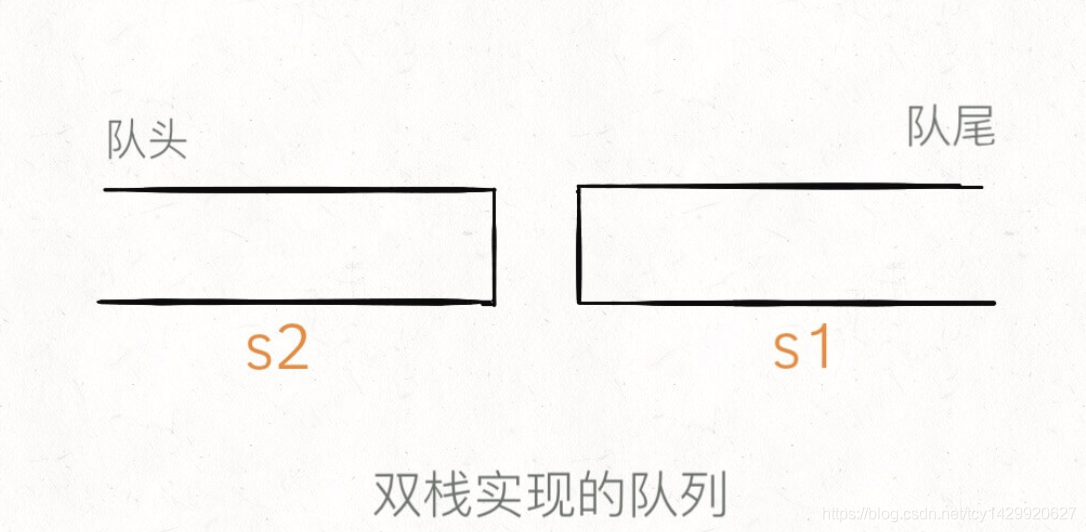题目描述
请你仅使用两个栈实现先入先出队列。队列应当支持一般队列支持的所有操作(push、pop、peek、empty):
实现 MyQueue 类:
void push(int x) 将元素 x 推到队列的末尾
int pop() 从队列的开头移除并返回元素
int peek() 返回队列开头的元素
boolean empty() 如果队列为空,返回 true ;否则,返回 false
说明:
你只能使用标准的栈操作 —— 也就是只有 push to top, peek/pop from top, size, 和 is empty 操作是合法的。
你所使用的语言也许不支持栈。你可以使用 list 或者 deque(双端队列)来模拟一个栈,只要是标准的栈操作即可。
进阶:
你能否实现每个操作均摊时间复杂度为 O(1) 的队列?换句话说,执行 n 个操作的总时间复杂度为 O(n) ,即使其中一个操作可能花费较长时间。
示例:
输入:
["MyQueue", "push", "push", "peek", "pop", "empty"]
[[], [1], [2], [], [], []]
输出:
[null, null, null, 1, 1, false]
解释:
MyQueue myQueue = new MyQueue();
myQueue.push(1); // queue is: [1]
myQueue.push(2); // queue is: [1, 2] (leftmost is front of the queue)
myQueue.peek(); // return 1
myQueue.pop(); // return 1, queue is [2]
myQueue.empty(); // return false
来源:力扣(LeetCode)链接:https://leetcode-cn.com/problems/implement-queue-using-stacks
解题思路
我们使用两个栈 s1, s2 就能实现一个队列的功能(这样放置栈可能更容易理解):
当调用 push 让元素入队时,只要把元素压入 s1 即可,比如说 push 进 3 个元素分别是 1,2,3,那么底层结构就是这样:
那么如果这时候使用 peek 查看队头的元素怎么办呢?按道理队头元素应该是 1,但是在 s1 中 1 被压在栈底,现在就要轮到 s2 起到一个中转的作用了:当 s2 为空时,可以把 s1 的所有元素取出再添加进 s2,这时候 s2 中元素就是先进先出顺序了。







 浙公网安备 33010602011771号
浙公网安备 33010602011771号